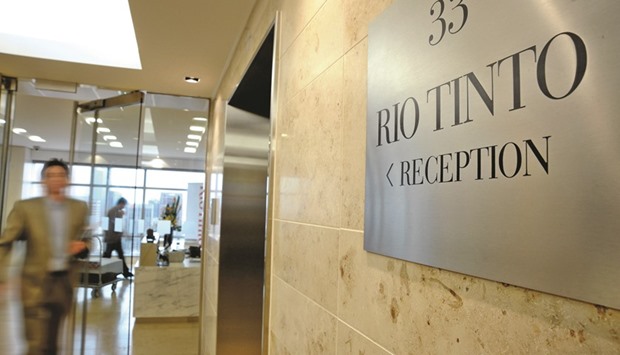The giant Simandou iron ore mine in Guinea caused countless headaches for Rio Tinto Group, but it was always worth the fight. Not anymore.
Rio turned its back on Simandou, one of the world’s largest untapped iron ore deposits, by signing a non-binding agreement with partner Aluminum Corp of China to hand over its stake. Rio may receive as much as $1.3bn should the mine be built.
For an undeveloped piece of mountain, Simandou has a storied past including a US Department of Justice corruption probe involving diamondbnaire Beny Steinmetz. The mine’s fortunes also offer an example of the situation facing the wider industry - after years of profligate spending the sector is abandoning new projects in a new era of lower iron ore prices.
“Out with a fizzle, not out with a bang,” said Hunter Hillcoat, an analyst at Investec in London. “It’s a pretty sad indictment of the super cycle.”
Rio Tinto, the world’s second-biggest miner, had been exploring Simandou since the 1990s, lured by a resource that’s now estimated at 2bn metric tonnes of iron. The deposit came to prominence in 2007 as Rio fought off a hostile takeover bid from larger rival BHP Billiton. At the time, Rio used the resource as an example to argue the company was undervalued, calling the project the world’s “top undeveloped” deposit.
“It was a rush for the best-quality assets you could get,” said Hillcoat. “There was never going to be enough iron ore to satisfy the world’s demand on the projections people had at the time.”
Rio has been fighting for rights for the asset since 2008, when the government stripped the company of some of its license area. Steinmetz’s BSG Resources bought rights to the project that year. Later, Vale agreed to acquire 51% of the project from BSGR for as much as $2.5bn in 2010. BSGR’s grip loosened when a US grand jury began looking at whether bribes were paid by Frederic Cilins, who had links to the firm, to a wife of former Guinea President Lansana Conte. BSGR was ultimately stripped of the license in 2014, with a Guinean government committee saying it found evidence of corruption in the award of the project. BSGR always denied any wrongdoing.
The development of Simandou was hampered by West Africa’s Ebola crisis in 2014 and the collapse in iron ore finally ended Rio’s interest. Prices slumped 67% from a peak of more than $190 a ton in 2011 as China’s slowdown sent commodities tumbling. The world was awash with supply after Rio, BHP and Vale had rapidly increased production.
The writing has been on the wall for a while. The company took a $1.1bn write-down on Simandou in February. New Rio Chief Executive Officer Jean-Sebastien Jacques said in August “there is no obvious way to take Simandou to the next phase,” and the company hasn’t been able to find a way to finance it.
“It cleans another a dead asset off the portfolio,” said Hillcoat, who added that the market doesn’t apply any value to the asset. “In the brave new world we’re in now, you just can’t develop these projects.”
Guinea will want the new owner, also known as Chinalco, to fare better than Rio. The country is counting on the project to double the size of its $6.5bn economy and turn it into the third-biggest exporter of iron ore. Earlier this year, Guinea blamed project delays on the “ramblings of the technical team in London,” a reference to Rio.
The parties should finalise the deal quickly to establish a new plan for Simandou’s development, Minister of Mines and Geology Abdoulaye Magassouba said in an e-mailed statement.
“This is a very positive event for the project, but we still have many months of work and major challenges ahead,” Magassouba said.
Before the deal was signed on Friday, Simandou was 46.6% owned by Rio, 41.3% by Chinalco, and 7.5% by the government.

A man walks through the entrance from the reception area of Rio Tinto’s head office in Melbourne. Rio turned its back on Simandou, one of the world’s largest untapped iron ore deposits, by signing a non-binding agreement with partner Aluminum Corp of China to hand over its stake.


